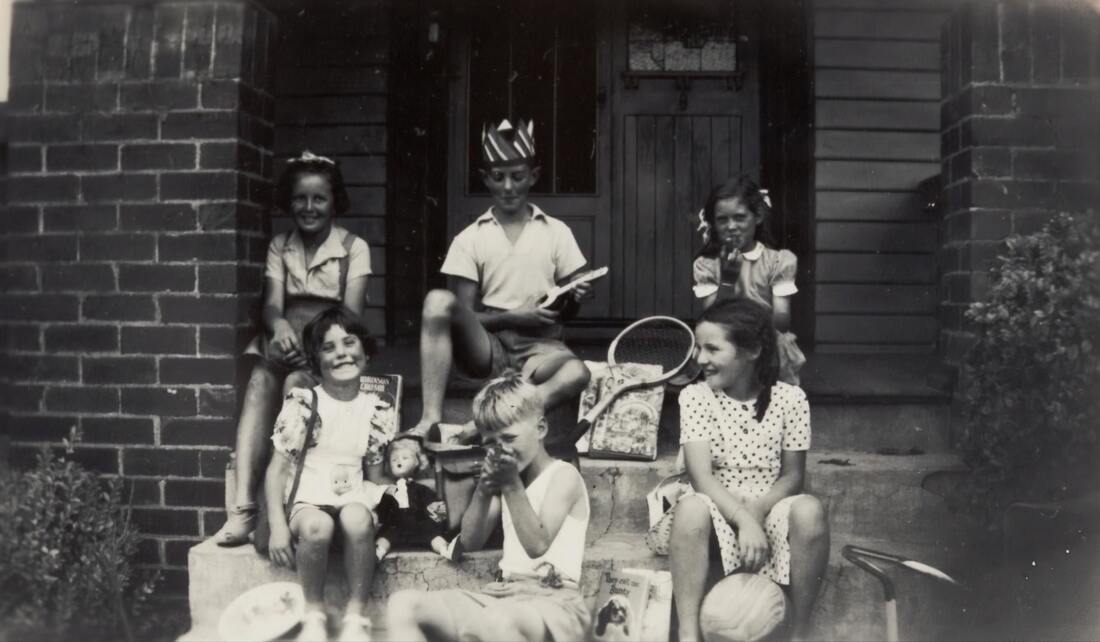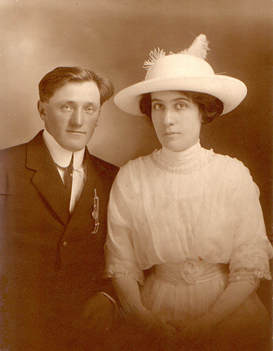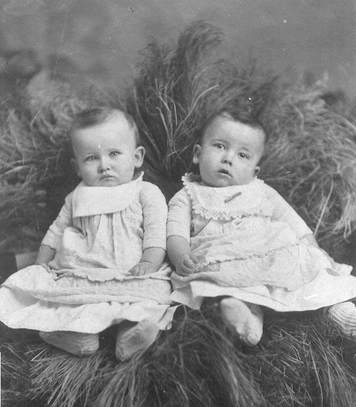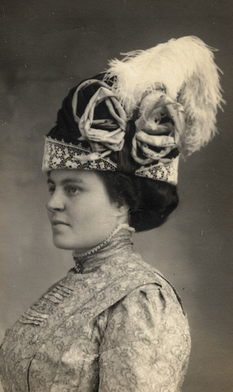 Three Boys & Three Girls with Christmas Presents, Front Step of Family Home, Ivanhoe, 1950 Photo by Museums Victoria on Unsplash The longer than you have been researching your family’s history, the more you realize the importance of exploring collateral lines including your ancestor’s siblings. Not only will this add to the richness of your story, but it has the potential to help you with brick walls. Let’s look. We get a better sense of family dynamics and place when we analyze the data of the siblings of our ancestors. This data combined with what we already know help us take a step back and see a more complete picture. I thought today I’d use an example of a sibling of my ancestor to tell a story and show what various records reveal.
Homeland Birth, Marriage, Death Records These basic records help you establish the birth order, the locations and spouse information for the sibling. And if you’re fortunate you might be able to find the death record in the old country or in the United States. Kate is a sibling of my ancestor Mathias. She was the 4th eldest in a family of 7 children. Of the 7 children, only three made it to adulthood. Kate married and began raising a family in a small village of Luxembourg. Thanks to online records, I was able to find her marriage and her children birth records. Kate and her husband Michael lived in the same village as her parents and my ancestor. Thanks to extensive census records for Luxembourg. I was able to find Kate and her family until 1846 in Luxembourg. Her children birth records and the census records help me understand her family unit. Family lore had said they immigrated to America in 1847 so I hopped the pond to see what US records I could find. United States Records Immigration Records Michael, Kate, and their children traveled to the United States in 1847. When I looked at ship records on Ancestry, I found them and noticed that there was an additional son that I hadn’t found in the Luxembourg records. So going back to the Luxembourg civil records I found him. So it’s great that I was able to find them but let’s step back and look at the two living brothers in Luxembourg. One died in 1852 and the other, my ancestor, lived his entire life in the Luxembourg village. What made him stay while Michael and Kate travel to America? Economics? Opportunity? Michael was 47 yrs. old and Kate was 46. During the mid-1800s, they weren’t exactly considered spring chickens, making this move. Today we’d think they were young yet. State and Federal Census Records Where did they go when they landed in America? Thanks to the State and Federal Census Records, I was able to track them to Ozaukee County, Wisconsin. The two sons are there through 1860 then only the eldest son was listed with his parents until their deaths. Interestingly, the two daughters that traveled with them do not appear on any of these census records or records after 1860. Where were they? Why did Michael and Kate settle there? Ozaukee County had a strong Luxembourg presence so perhaps that fact and the possibility of land was the draw. Obituaries No obituaries were found online for Michael or Kate or son John. Wills Ancestry has provided will information for several states and luckily Michael had a will which had his death date and mentioned his wife, Kate. So at least I knew she was alive. Interestingly no children were listed in the will except for John who would inherit the 20 acres of land after Kate died. The other children were not listed a son and two daughters. Were there problems in the family or was it because they were grown and away from home? Other wills in my family almost always talk about their adult children. Probate Records I decided to see what records FamilySearch had for Ozaukee county in Wisconsin. I found Probate records available online. These are different from those I found in Ancestry. Here I found a sad detailed record about Kate who was widowed and living with her son John. Due to her age and confused mental state, there was a guardian petition with the court. Several witnesses noted the challenges faced by Kate and her son, John with tales of her running away, looking for cattle that weren’t there and mainly subsisting on coffee, bread, and sugar. Among the witnesses was Catherine—the daughter of my ancestor, Mathias. It sounds like people tried to help but felt Kate would be better off with her daughter in Chicago. * *Looking at FTM trees on Ancestry gave me some clues about the missing daughter and son. They married and had moved to Minnesota prior to and around 1860. It was puzzling that neither were mentioned at the guardianship as both were still living. This will be a mystery worth looking into. So, what how does this help me with my direct ancestry line? I was curious about the niece and discovered that she married in Ozaukee County, WI in 1857. According to her obituary and census records she arrived around 1852 with relatives. So she came to America after Michael and Kate. Did she settle near here because they were here? And who are the relatives she came to America with? My ancestors didn’t arrive until 1887… a few years after the elder parents died in Luxembourg. They settled with another pocket of Luxembourg settlers in Lake City, Minnesota. The point of researching the extended family and siblings is to see a pattern. While I was focused on my people coming in 1887, there were a few waves of the extended family traveling from Luxembourg and settling in Wisconsin and Minnesota much earlier than my direct ancestors. It is likely that these families stayed in touch with their relatives in Luxembourg. They moved to areas where other relatives lived, where there were opportunities and other Luxembourgers. In addition to learning more about the extended family, I’ve found that revisiting those names and dates has taught me to look a little deeper in context to what was happening at the time. Who traveled to America? Who stayed? Where did they live and why? Who took care of the elders? What was happening in the family? Hopefully this gives you some ideas for your own family. Your challenge this week is to pick a sibling of your emigrant ancestor and research their life. You may find interesting ties back to your direct line or find the answer to a brick wall in your ancestor’s story. Or perhaps you’ll discover a fellow researcher from a branch of your family that can fill in some missing pieces, share photos and compare research. Happy researching!
0 Comments
Leave a Reply. |
AuthorWith a lifelong passion for genealogy and history, the author enjoys the opportunity to share genealogy tidbits, inspiring others to research and write their family story. Archives
July 2024
Categories |



 RSS Feed
RSS Feed